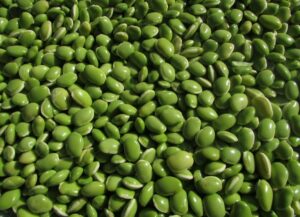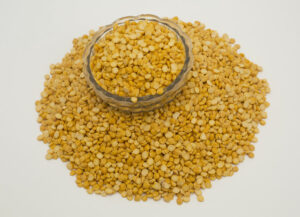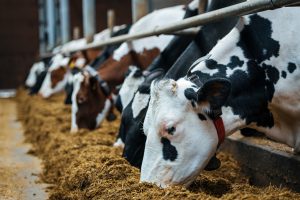María Villagrasa & Fernando Diaz
The deficit of feed protein sources in Europe is considered a major problem with alternative sources needed to be found to reduce dependence on imported protein concentrates. From this perspective, lupin seeds can be an alternative source of locally produced proteins.
Lupin seeds contain 28 to 42% crude protein (CP) on a dry matter (DMS) basis; this protein however degrades rapidly in the rumen. It also contains a high concentration of carbohydrates and non-digestible fiber.
In addition to the high protein content, the lupin plant has a great capacity for nitrogen fixation and the release of organic phosphorus from the soil, thus improving the soil nutrient profile for subsequent crops.
The oil in lupin seeds could play an important nutritional role because of their fatty acid profile (FA), particularly polyunsaturated fatty acids (PUFA), which are important in human and animal nutrition.
Special emphasis is placed on enough consumption of omega-3 FA with a recommended ratio of n-3 to n-6 of 1:4 in the diet. Lupin seed oil has a balanced FA composition with a total saturated FA of approximately 10% and a total PUFA of 90%. Among the PUFAs, the most abundant are oleic and linoleic, comprising 86% of the total oil.
This profile allows for lupins to play an important role as a protein and nutrient-rich supplement in the ration of dairy cows. However, experiments where soybeans were partially replaced with lupin flour have yielded inconsistent results.
The objective of a study (Joch and Kudrna. 2020) was to determine the effects of a partial replacement of soybean meal with white lupin seeds on milk yield and composition of high-producing dairy cows.
Thirty cows were fed diets where soybean meal was partially replaced with coarsely-ground lupins in the concentrate mix, so that three diets were obtained:
- CON: control diet; concentrate mix with 20% soybean meal (DM basis) and no lupins;
- LU30: Lupins replaced 30% soybean meal.
- LU50: Lupins replaced 50% soybean meal.
The lupin seed composition (on a DM basis) compared to soybean meal was: (88.2 vs. 87.4%); crude protein: (29.4 vs. 49.6%); (11.9 vs. 2.2%); neutral detergent fiber: (28.7% vs. 15.9%) and acid detergent fiber: (22 vs. 7.2%).
Cows fed lupins produced less milk
While dry matter intake was not affected by diet, milk production decreased as lupins in the diet increased: CON: 36.1; LU30: 35.7; LU50: 35.2 kg/d. Cows fed the LU50 diet produced approximately 1 kg/day less milk than cows fed the CON diet. Similarly, fat and energy-corrected milk values were higher in CON animals.
Milk fat (3.8%) and protein (3.2%) were not affected by protein source which could be related to a less efficient use of degradable protein in the rumen and/or a lower supply of non-degradable protein in cows fed diets containing lupins.
The replacement of soybeans with lupins had no effect on the efficiency of nitrogen use, nor did it affect the body weight of cows.
The fatty acid profile in milk improved with the lupins in the diet
The LU50 diet resulted in an increase in the concentration of oleic acid (CON:19.7; LU30: 19.5; LU50: 20.4% of total FA) and total monounsaturated FA (CON:24.5; LU30: 24.1; LU50: 25.0%.0% of total FA). On the other hand, with the LU50 diet the total saturated FA concentration was reduced (CON: 61.6; LU30: 61.7; LU50: 60.8% of total FA).
These results show that although the magnitude of the change in the FA profile is small with the inclusion of lupins, the concentration of saturated FA was reduced or the monounsaturated FA was increased, this suggests that replacing soybeans with lupins could produce milk with a FA profile beneficial to human health.
In conclusion, the replacement of soybean meal with lupins reduced milk production in high-producing cows, although it produced favorable changes in the milk fatty acid profile.
Reference
Miroslav Joch and Václav Kudrna. Partial replacement of soybean meal by white lupine seeds in the diet of dairy cows. Asian-Australas J Anim Sci Vol. 33, No. 6:957-964 June 2020.
© 2020 Dairy Knowledge Center. All Rights Reserved.









